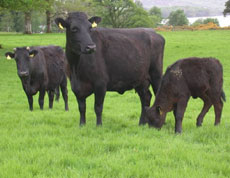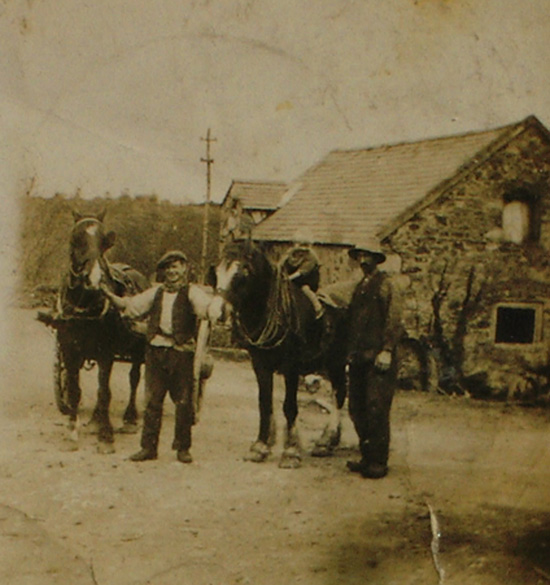 |
Life on a small Irish Farm. |

|
| |
Ownership
of the Land. |
|||
Bygone Days. Read about food consumed by early people in Ireland. In the rest of the country the tenant was liable to lose his tenure, if someone offered a better price, so it was to his befit to make the place look as unappealing as possible. England was at war with France between the years of 1793 and 1815 and was unable to buy food from Europe Irish farming experienced a boom during this period, this resulted in an increase in rents which were not reduced after the defeat of Napoleon when the boom ended. The year 1830 saw the introduction of the first land act,this was an attempt to give the tenants a modicum of security to their properties. Subsequent acts were passed culminating in Wyndhams' Act in 1903 which offered inducements to landlords to sell their properties. The government made available loans to tenants over a period of ninety nine years enabling them to purchase their property, by the time of Ireland's independence over eleven million acres were owned by former tenants. Strong Farmers. Between Small Farmers. The majority of Irish farms had between five and thirty acres, in the Munster area most of these engaged in dairy farming, the women making butter which ended up in the great butter market in Cork, the calves would be sold on at the cattle fairs. All small farmers practiced mixed farming, keeping a cow or two growing potatoes and grain to feed the family In coastal areas some farmers would engage in both
fishing and farming, and indeed this is true to some extent today. Fishing
supplied a welcome variation to the diet, and an added source of income,
the surplus being either sold or bartered. The seas around Ireland particularly
in the past were well stocked with many species of fish and shellfish,
in parts of the country the harvesting of kelp provided
another source of income. The Cottiers. The most numerous people in rural Ireland were
the The Cottiers would grow food on his plot, keep a pig and hens, and could also rent more land in Con-acre (Land that is plowed and ready to receive a crop) rent for con-acre land was usually between £5 and £8 per acre. Life for the Cottiers was miserable living usually in a damp one roomed mud hut often without windows or chimney. Their diet was almost exclusively potatoes, a particularly difficult time was in months of June and July 'The hungry months' when the old crop of potatoes were finished and the new not yet ready to harvest. Children of the Cottiers would often go to the hiring fairs and offer their services. Labourer's. Most towns held twice yearly hiring fairs, at these
|
|||
|
|
Rundale. |
||
|
Rundale was a system of farming peculiar to Ireland that was carried on in all parts but principally in the west, it was a carryover from the Celtic way of life. A group of family's would get together and rent a block of land, they would divide the land into arable and pasture each family in the group would be entitled to graze a fixed number of livestock on the land. The arable land was divided fairly also ensuring all had equal share of good and bad land. By the end of the eighteenth century the system was dying out, landlords disliked it, and also it was destroying its self from within, as the population grew the land was being divided into smaller and smaller plots. A writer in Donegal found a half acre field that was divided between twenty six people. |
||
|
|
Secret
Societies. |
||
|
During the early nineteenth century many secret societies sprung up each seeking to protect the rights of its members. These were known by various names Carders, White feet, Threshers and Ribbon men, they were in effect trade unions trying to enforce what they considered justice. They tried to stop unreasonable rent increases and to prevent farmers overcharging for con acre, and to discourage people from renting a property form which the previous tenant had been evicted. They also tried to stop the Protestant clergymen increasing the tithe and the Catholic priest from raising his fees for weddings and funerals. Those who the societies considered to have broken their rules were often visited at night and threatened, if they persisted they may be beaten up or even murdered. The government replied by hanging many offenders, thousands more were transported to Australia. Wyndhams' Act of 1903, which made available 100 million pounds to enable tenants to purchase land. Inducements were also offered to landlords to sell their land. By the time Ireland became independent in 1921 some eleven million acres were purchased by tenants in this way. If you are interested in Irish Farming History you will find some information reprinted from Samuel Lewis' Topographical Directory of Ireland A Farm For the Future.
|
||
|
|